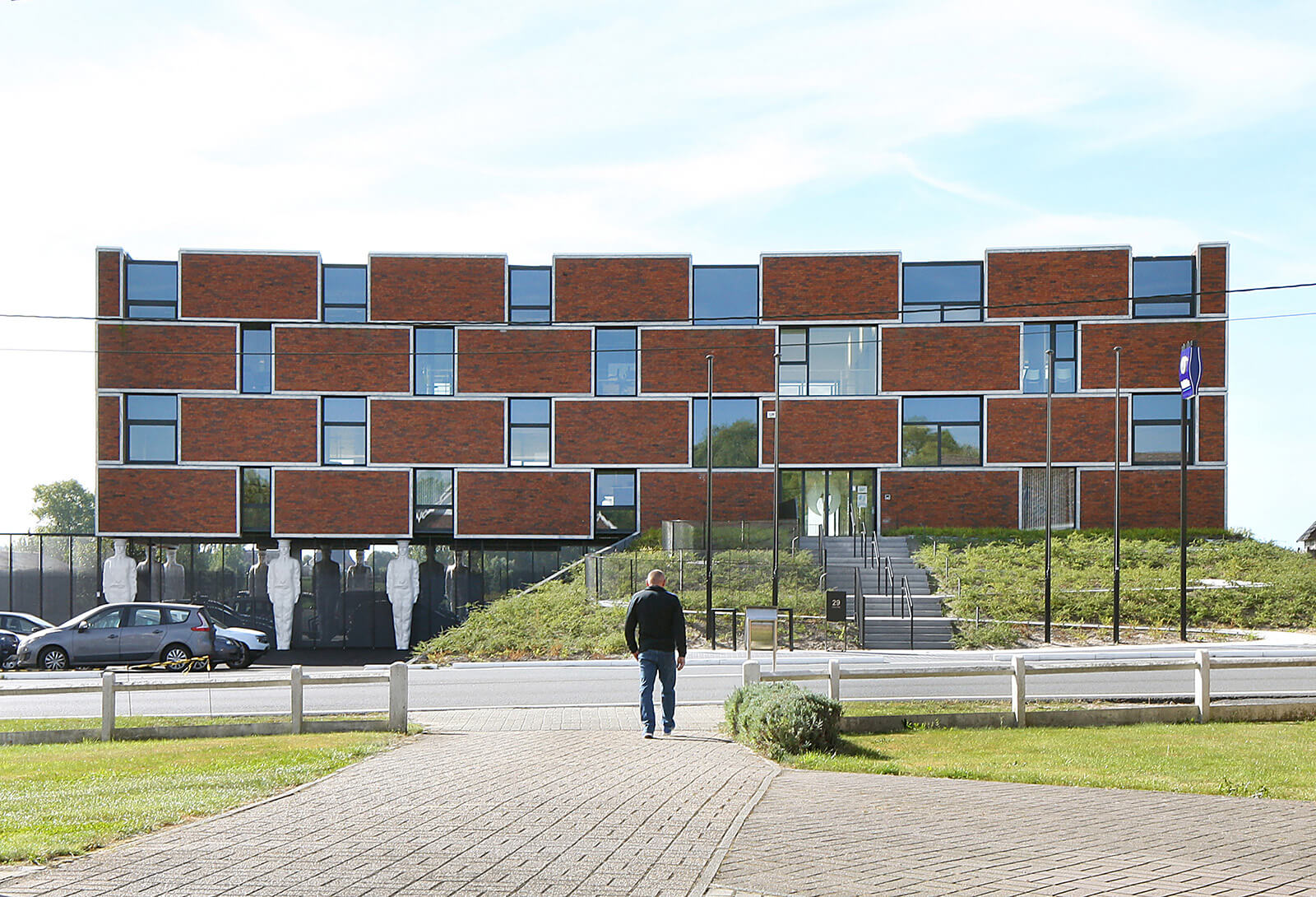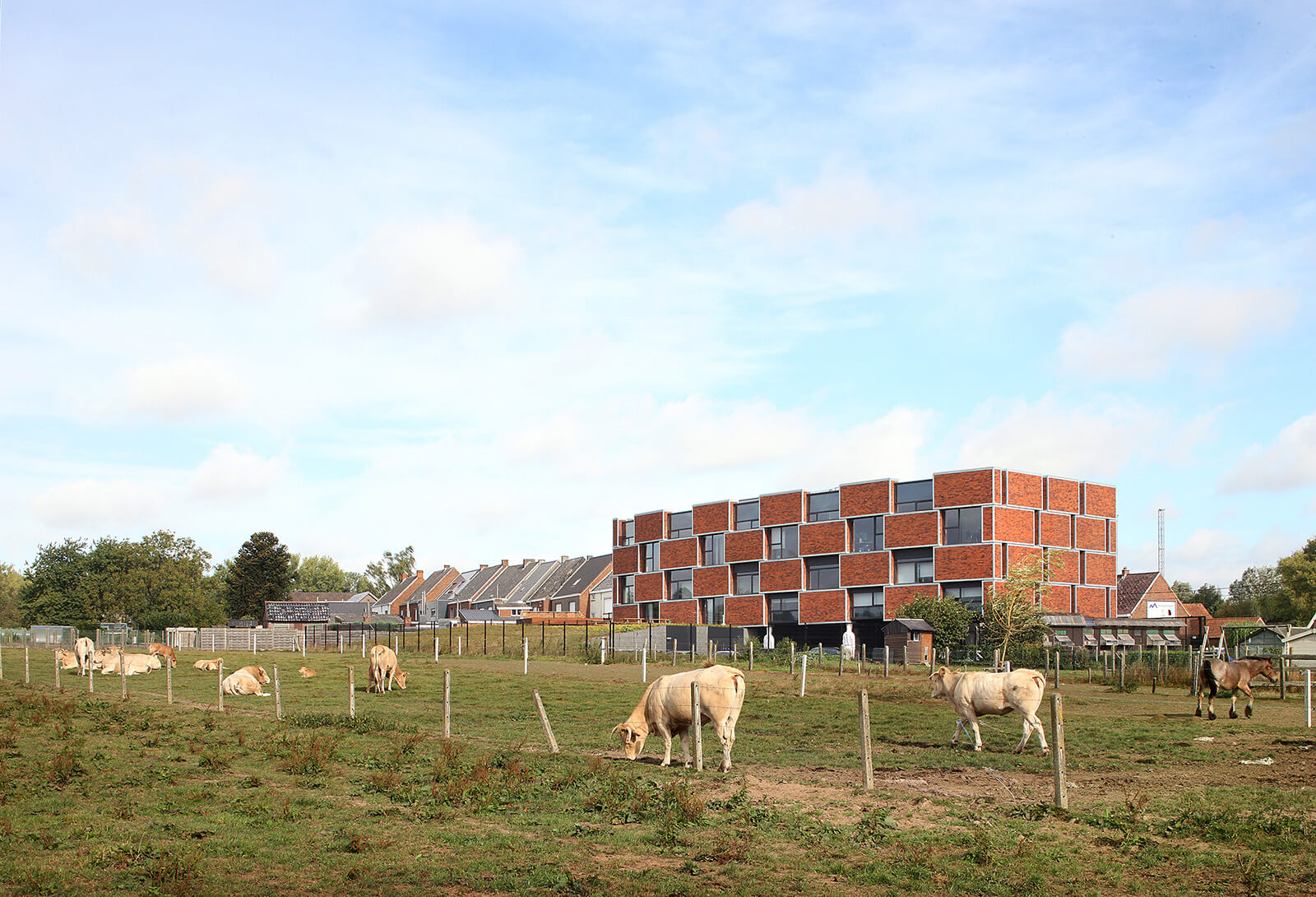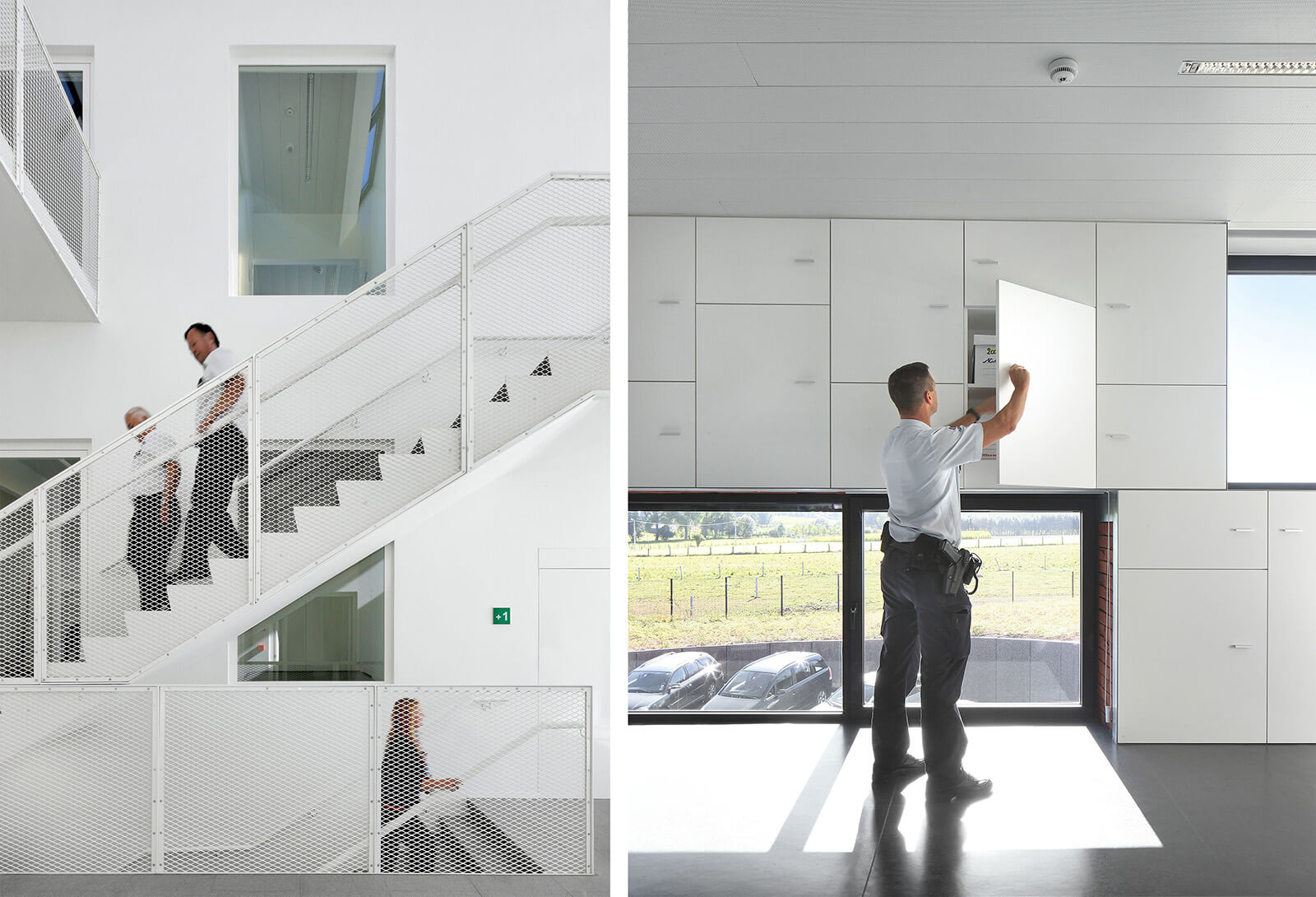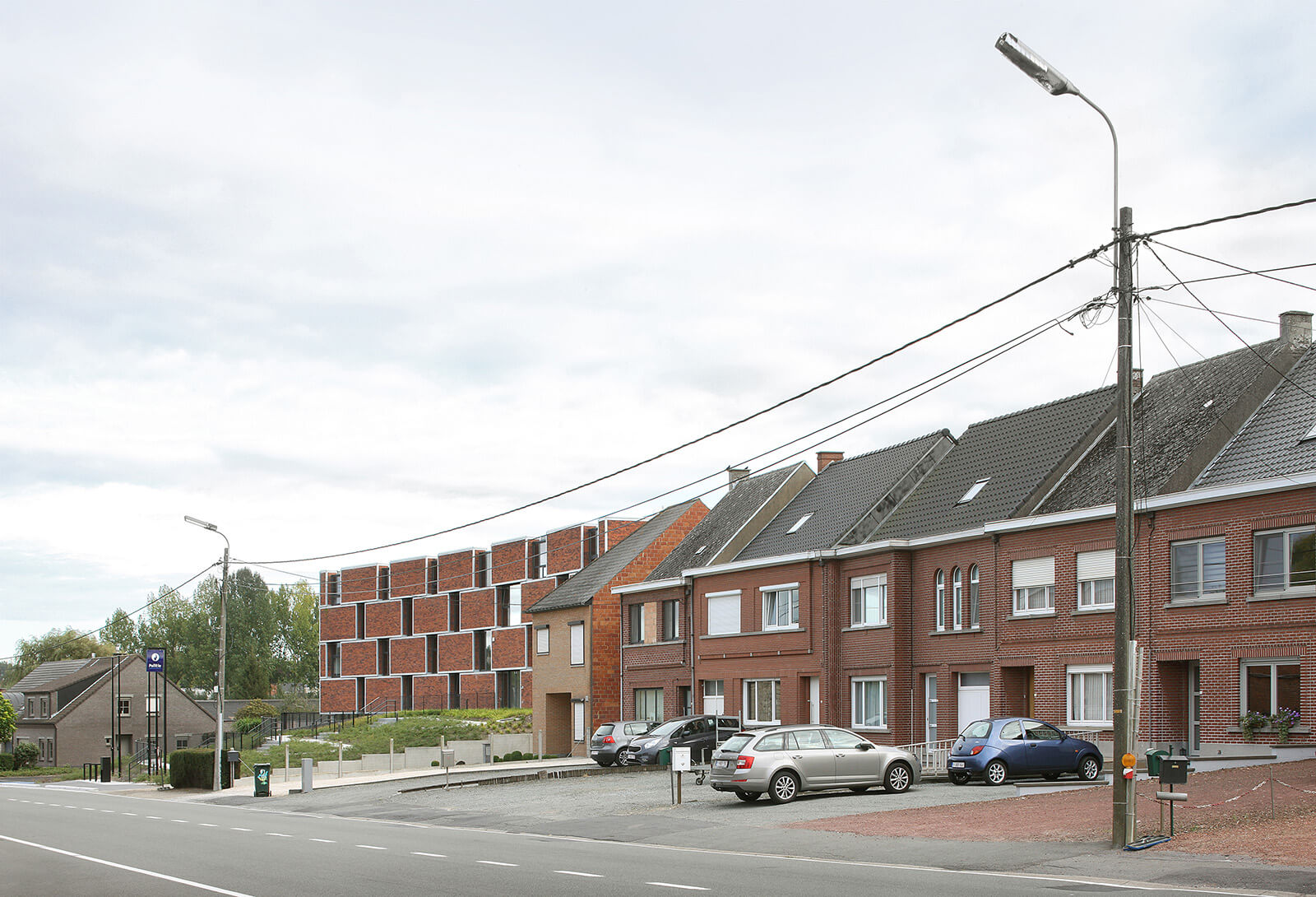Brakel Police Station / ORG
Brakel Police Station / ORG
Description
The Brakel Police Station is the police headquarters for the towns of Brakel, Horebeke, Maarkedal en Zwalm, a largely agricultural region in the so-called Flemisch Ardennes. The building provides offices, training class rooms, and gathering facilities for 50 police officers, 2 detainment cells, and parking spaces for 25 security vehicles. By positioning the building carefully on the site, new outdoor spaces for private and public use were created including: parking and logistics under the building structure, a topographic landscape entry plaza, and an exterior stone patio.
This modest public facility has a number of significant architectural features which account for its adoption as a significant landmark for the townspeople and local political establishment.
The building is built with large blocks, called megabricks, similar in size to the stone monoliths that were used in the architecture of antiquity. The megabricks consist of thick sandwich panels (cladding, insulation, vertical structure, and wall cabinets), fit within steel frames, and bricks strips glued onto cement plates. The megabricks are structurally deceptive (not load-bearing) but utilize precise detailing to give the impression of large blocks. The vertical structure consists of typical reinforced concrete post and beam construction, hidden in the overlap of two megabricks.
The megabricks, stacked one atop the other, meet the ground on top of a ‘green’ public space. An S-curved ramp contributes to the sculptural topography that denotes the principal entrance to the facility. The mega bricks cantilever beyond this artificial landscape, elevated to give framed views to the agricultural landscape beyond. Underneath is security vehicle parking, logistics, and the maximum security private entry point to the facility.
Twelve gargantuan statues, called Atlantes, measuring nearly 12 ft. (3.6m), scaled 2:1 of a person, stand effortlessly in the place of each column. They give a noble stature to the facility akin to the Atlantes of Renaissance architectural vocabulary or the Caryatids of Ancient Greece. Here at the police station, the figures are made of two plastic halves not stone, are gentle not heavy, and express a distinctly androgynous being. They both support the weight of the facility above, and project an institutional dignity of the officers and town public.
A police station through its strong austere program can express brutality in form. The Atlantes offer humane forms, in one sense protective or overpowering, but at the same time humorous and playful.
Together the megabricks form a subtle bend, a welcoming gesture embracing visitors, and a geometry to regulate light and views. From within the building concave north façade is ‘closed’ or internal, offering privacy, whereas the convex south façade opens up to the landscape. In addition to the subtle bend in the façade, the plan is further influenced by a central stairwell, which bisects a three-levels of individual offices and shared work areas and common service spaces. The generous stairwell is a space on to itself, both ordered the adjacent spaces but allowing for a number of views through, and areas where spontaneous interactions between the officers take place.
Extra Info
| Year: | 2009-2016 |
| Area: | 1,800 Sqm |
| Collaborators: | Alexander D'Hooghe, Luk Peeters, Natalie Seys, Wim François (Project leader), Sanne Peeters, Michiel De Potter, Steve Swiggers, Thomas Van Bouwel, Raf De Preter |
| Consultants: | Sweco (installations, structural) |
| Client: | Police of the towns Brakel, Horebeke, Maarkedal, Zwalm |














